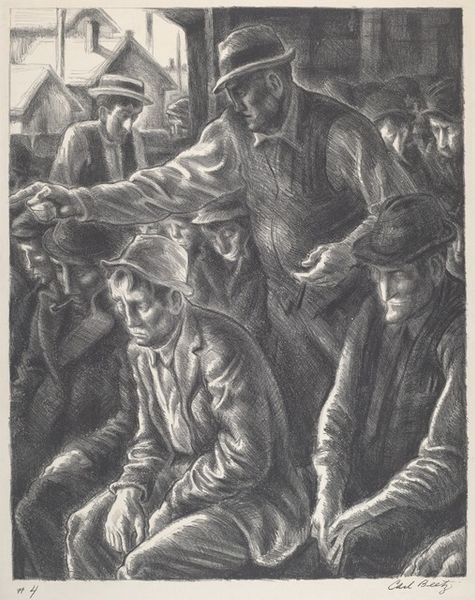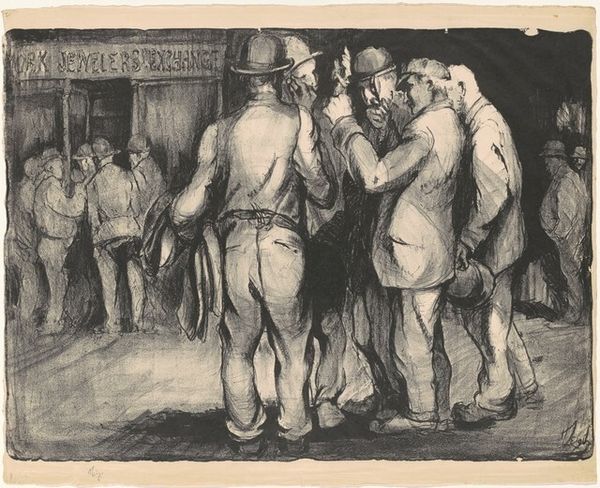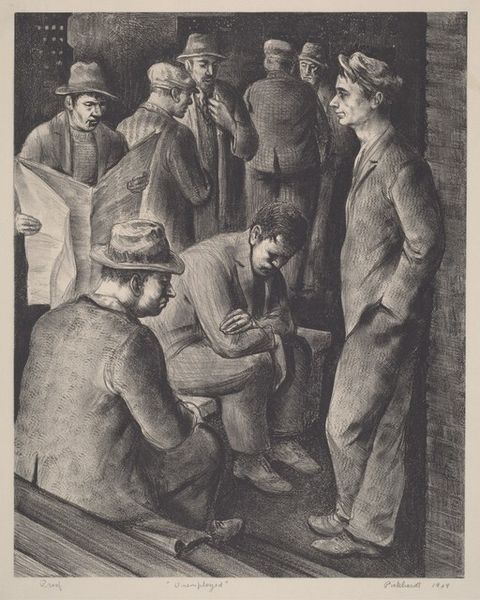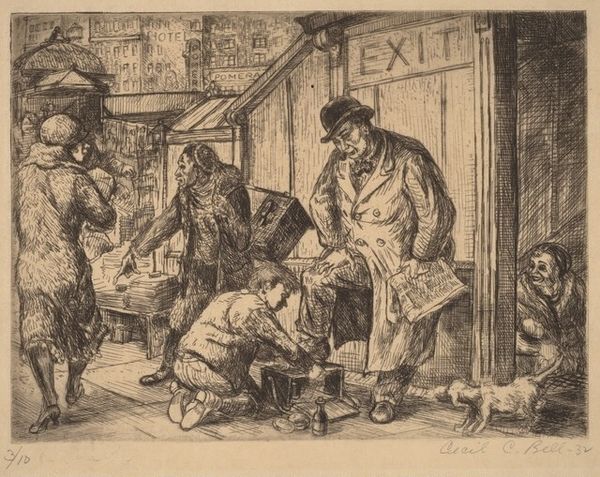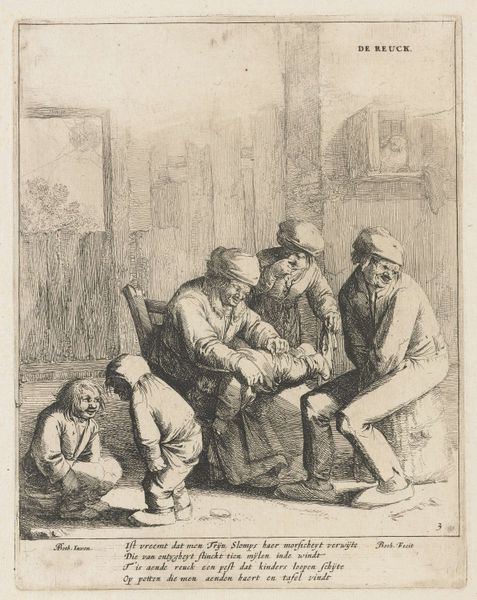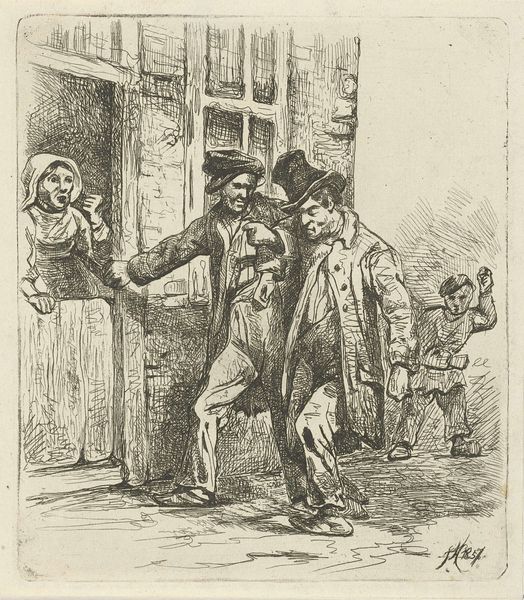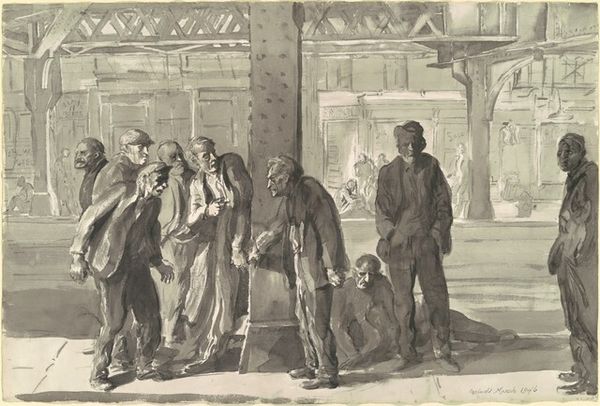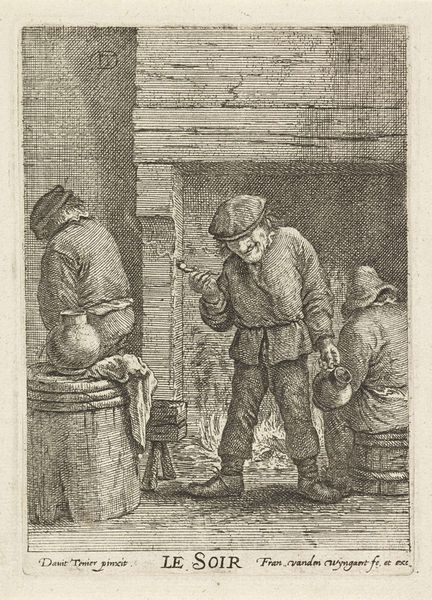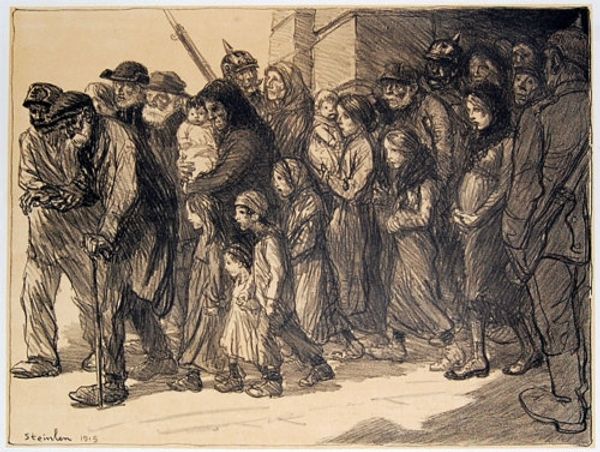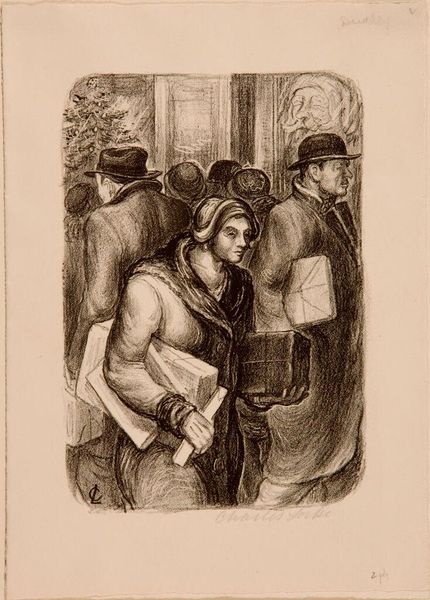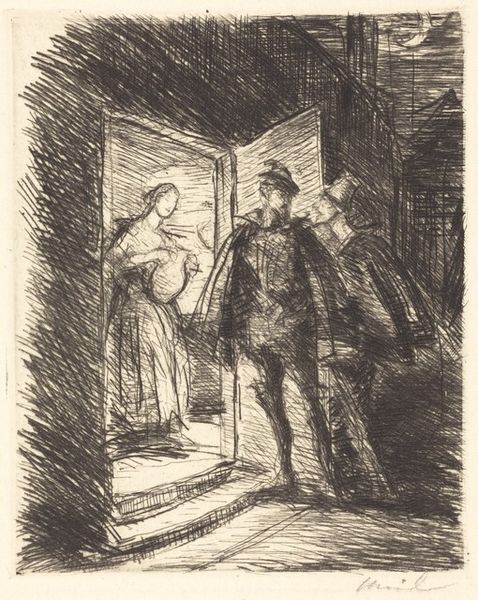
print, etching
#
pencil drawn
# print
#
etching
#
pencil sketch
#
figuration
#
pencil drawing
#
group-portraits
#
ashcan-school
#
cityscape
#
portrait drawing
#
genre-painting
#
realism
Dimensions: plate: 16.1 × 14.9 cm (6 5/16 × 5 7/8 in.) sheet: 21 × 19 cm (8 1/4 × 7 1/2 in.)
Copyright: National Gallery of Art: CC0 1.0
Curator: Reginald Marsh’s etching, "Bowery," created in 1928, presents us with a compelling snapshot of urban life during that era. The work really speaks to the socio-economic climate of the time. Editor: It's a somber image. The closely packed figures and dense hatching create a palpable feeling of confinement, almost like a sense of lurking sadness. Curator: Exactly. Marsh was deeply invested in depicting the realities of marginalized communities. The Bowery, during the late 1920s, was a haven for the working class and those facing hardship, often overlooked by mainstream society. Editor: Notice the attire? Caps, workingman’s jackets… these articles become symbols themselves, speaking to the identity of an entire social group. They represent resilience, yet there's a uniformity, perhaps symbolizing a loss of individuality within systemic challenges. Curator: I see the etching as a reflection of social tensions during a time when many faced economic struggles in this very neighborhood. Marsh wasn't simply observing; he was capturing the daily lives of people at the periphery of a booming urban economy. Editor: And isn't it interesting how he uses light? It seems to struggle to penetrate this dense mass of humanity, adding to the overall mood of isolation, of people being stuck together yet profoundly alone. The dim light casts long shadows in a way that feels metaphorical. Curator: Absolutely. And through his detailed attention to depicting the working class, he challenges us to consider the systems that contribute to these societal realities, to grapple with the unequal power dynamics during the roaring twenties. Editor: It’s more than just documentation; the way Marsh used visual codes to construct the social narrative around working men is really poignant. The symbolic weight carried in each careful stroke… It's a remarkable layering. Curator: The fact that it's a print makes the work even more significant, highlighting issues of accessibility and mass production, important components to understanding the economic structures that affect the represented community. Editor: Ultimately, the artwork provides a portal, an artifact, so we can contemplate these realities. This has changed the way I see depictions of similar communities. Curator: Me too. It's a testament to the artist's ability to immortalize moments in history.
Comments
No comments
Be the first to comment and join the conversation on the ultimate creative platform.

